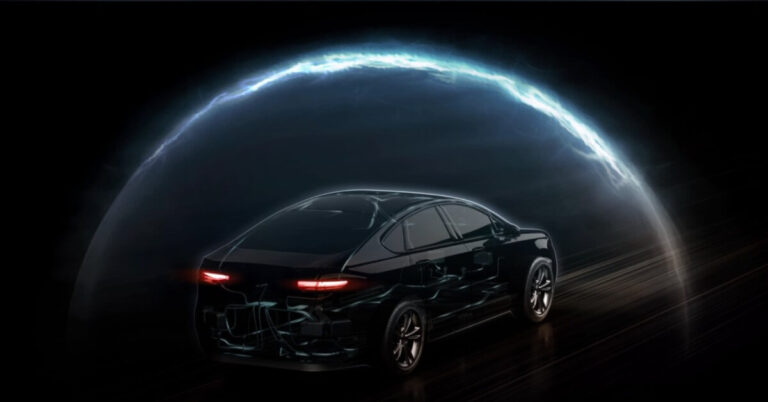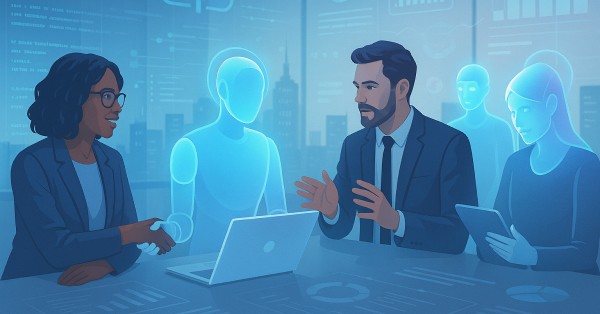NVIDIA Unifies AI-Powered Safety for AV Development
NVIDIA has unveiled NVIDIA Halos, a full-stack safety system designed to support autonomous vehicle (AV) development from cloud to car. This integrated platform combines hardware, software, AI models, and simulation tools to ensure the safety and reliability of AVs.
As AI and robotics continue to transform transportation, ensuring safety in self-driving technology is critical. NVIDIA Halos is built to provide automakers with the tools needed to develop, test, and deploy AV systems while maintaining compliance with industry regulations and safety standards.
“With the launch of Halos, we’re empowering partners and developers to choose the state-of-the-art technology elements they need to build their own unique offerings,” said Riccardo Mariani, Vice President of Industry Safety at NVIDIA.
Halos: A Three-Tier Safety Approach for Autonomous Vehicles
NVIDIA Halos is structured across three key levels to ensure a comprehensive safety framework:
- Technology Safety: Covers platform-level safety, AI-driven algorithms, and ecosystem-wide safety solutions.
- Development Safety: Implements safety measures at the design, deployment, and validation stages.
- Computational Safety: Utilizes NVIDIA’s AI-driven training, simulation, and deployment systems to ensure safe AV operations.
Computational Safety Powered by NVIDIA’s AI Infrastructure
NVIDIA Halos is built on three core computing systems:
- NVIDIA DGX – Used for AI training, helping AV models learn from massive datasets.
- NVIDIA Omniverse with NVIDIA Cosmos – Simulates real-world driving environments for AV testing and validation.
- NVIDIA DRIVE AGX – Serves as the onboard AI computer that enables safe deployment of AV technology.
By integrating AI at every stage—from model training to real-world execution—Halos ensures AVs are safe, intelligent, and reliable.
AI Systems Inspection Lab: Ensuring Safe AV Integration
A major component of Halos is the NVIDIA AI Systems Inspection Lab, which helps automakers and developers verify their AV systems for safety compliance.
This program, the first worldwide initiative accredited by the ANSI National Accreditation Board, provides a unified framework integrating:
- Functional safety
- Cybersecurity
- AI safety
- Regulatory compliance
Industry Leaders Join the AI Systems Inspection Lab
Several automotive technology companies have already joined the AI Systems Inspection Lab, including:
- Ficosa – Enhancing advanced driver-assistance systems (ADAS) integrity.
- OMNIVISION – Developing AI-powered safety solutions for in-car entertainment and driver monitoring.
- onsemi – Innovating new automotive sensing technologies for road safety.
- Continental – Advancing AI-driven vehicle component safety.
These partnerships reinforce NVIDIA’s mission to set new industry standards for AV safety and reliability.
Key Features of NVIDIA Halos for AV Safety
NVIDIA Halos is built on three core focus areas that form the foundation of a robust AV safety ecosystem.
1. Platform Safety
Halos features a safety-assessed system-on-a-chip (SoC) with hundreds of built-in safety mechanisms to prevent system failures. The platform integrates:
- NVIDIA DriveOS – A safety-certified automotive operating system designed to power AVs.
- DRIVE AGX Hyperion – A hardware platform that connects AI chips, sensors, and software for seamless AV operation.
- Safety-assessed base platform – Ensures AVs meet industry safety requirements across different applications.
2. Algorithmic Safety
AI-driven algorithms are at the heart of Halos, ensuring safe decision-making in real-world driving scenarios. Halos includes:
- AI-powered safety data processing – Filters out biases and incorrect data before AV training begins.
- NVIDIA Omniverse simulation – Uses AI-generated driving environments for virtual testing.
- Modular AV stack with end-to-end AI models – Enables real-time AI decision-making while ensuring safety compliance.
3. Ecosystem Safety
Halos extends beyond AV software and hardware by providing a safety-focused data ecosystem. This includes:
- Diverse, unbiased safety datasets – AI models are trained on real-world traffic scenarios for better accuracy and reliability.
- Automated safety evaluations – Uses triaging workflows to assess potential safety risks before AV deployment.
- Continuous AI-powered safety improvements – Data flywheels ensure AV models constantly evolve to enhance road safety.
NVIDIA’s AV Safety Track Record: A Commitment to Reliability
NVIDIA has invested heavily in autonomous vehicle safety research, making Halos a culmination of decades of AI innovation. The company has achieved:
- 15,000+ engineering years dedicated to vehicle safety research
- 10,000+ hours contributed to international AV safety standards
- 1,000+ patents filed related to AV safety
- 240+ published research papers on AI-driven AV safety
- 30+ certifications in AV safety and cybersecurity
Industry Recognitions for NVIDIA Automotive Safety
NVIDIA’s AV technology has received multiple safety certifications, including:
- ISO 26262 ASIL D Compliance – NVIDIA DriveOS 6.0 meets the highest safety standards for automotive software.
- ISO/SAE 21434 Cybersecurity Certification – TÜV SÜD accredited NVIDIA’s automotive security processes.
- United Nations Economic Commission for Europe (UNECE) AV Safety Assessment – TÜV Rheinland independently assessed NVIDIA DRIVE AV for compliance with international AV safety regulations.
These certifications reinforce NVIDIA’s commitment to setting industry benchmarks for AV safety.
The Future of AV Safety with NVIDIA Halos
NVIDIA Halos represents a paradigm shift in autonomous vehicle safety, unifying AI, simulation, and real-time processing into a comprehensive, end-to-end safety framework.
By integrating hardware, software, AI models, and testing tools, NVIDIA provides automakers and developers with a scalable, safety-first approach to AV deployment.
To learn more about NVIDIA’s advancements in AV safety, industry professionals can attend AV Safety Day at the NVIDIA GTC AI Conference, running through March 21.
With NVIDIA Halos, autonomous vehicle safety is no longer an afterthought—it’s built into every layer of AV development.






















